1 - The historic old town of Bale
 Through the archway of the Bembo Palace, one enters the old town centre of Bale. Its origins go back to Roman times. In the early Middle Ages the settlement was fortified and secured with a city wall, which was destroyed in the war with Hungary in 1413. Remains of these remains can still be seen in the outer walls of the Bembo Palace. Today's buildings with their characteristic stone houses date largely from the 17th - 19th century.
Through the archway of the Bembo Palace, one enters the old town centre of Bale. Its origins go back to Roman times. In the early Middle Ages the settlement was fortified and secured with a city wall, which was destroyed in the war with Hungary in 1413. Remains of these remains can still be seen in the outer walls of the Bembo Palace. Today's buildings with their characteristic stone houses date largely from the 17th - 19th century.
In the narrow cobbled alleys between the old walls you will feel as if you have been transported back in time - let yourself be enchanted by it!
2 - Parish Church Sv. Elisabeti
 The neo-Baroque parish church of the 'Visit of the Blessed Virgin Mary to the St. Elisabeth' (also named 'Sveti Julian') was built in 1882 on the foundations of an older 9th century church. Findings prove that a Byzantine chapel already existed here in the 5th-6th century. Today's church houses numerous art treasures from the 8th to 15th centuries, including a wooden altar from the 9th century and a Romanesque crucifix from the 12th century.
The neo-Baroque parish church of the 'Visit of the Blessed Virgin Mary to the St. Elisabeth' (also named 'Sveti Julian') was built in 1882 on the foundations of an older 9th century church. Findings prove that a Byzantine chapel already existed here in the 5th-6th century. Today's church houses numerous art treasures from the 8th to 15th centuries, including a wooden altar from the 9th century and a Romanesque crucifix from the 12th century.
Entering the church, which, by the way, is reminiscent of the Euphrasius Basilica in Porec, the colourful frescoes, framed by the brightness of the white arcades, are surprising.
3 - Lapidarium
 In the crypt of the parish church Sv. Elisabeti is the Lapidarium. It houses a remarkable collection of sculptures and sarcophagi from antiquity and the early Middle Ages. The entrance to the Lapidarium is on the back of the church.
In the crypt of the parish church Sv. Elisabeti is the Lapidarium. It houses a remarkable collection of sculptures and sarcophagi from antiquity and the early Middle Ages. The entrance to the Lapidarium is on the back of the church.
From the Lapidarium you can also visit the church, which is otherwise only open for worship services.
Opening hours in summer from 10:00 -13:00 & 17:00-20:00 h, otherwise by arrangement, admission 2, - €
4 - Palazzo Soardo Bembo
 On the site of a Roman castrum there is probably the most striking building in Bales, the palazzo of the Soardo and Bembo families. The two original fortified towers date from the early Middle Ages and were connected by a bridge. From 1331 onwards, the towers were extended under Venetian rule and finally connected by the owners of that time, the Soardo family, in the 15th and 16th century by a residential wing.
On the site of a Roman castrum there is probably the most striking building in Bales, the palazzo of the Soardo and Bembo families. The two original fortified towers date from the early Middle Ages and were connected by a bridge. From 1331 onwards, the towers were extended under Venetian rule and finally connected by the owners of that time, the Soardo family, in the 15th and 16th century by a residential wing.
In the first tower of the palace there is a Gothic archway through which you enter the old town centre. Above the archway is the coat of arms of the Soardo-Bembo family, a Venetian lion with an open book, and a sundial embedded in the façade.
The castle has been extensively renovated in recent years by the Italian municipality of Bales and is open to the public. Today the premises are used for cultural events.
5 - Town hall and Trg Tomaso Bembo
 Opposite Bembo Castle is the 14th century town hall, also built in Venetian style. In the Middle Ages it served as a place of jurisdiction and also as a granary. The building, rebuilt in the nineteenth century in neo-Gothic style, now houses the town hall of Bale.
Opposite Bembo Castle is the 14th century town hall, also built in Venetian style. In the Middle Ages it served as a place of jurisdiction and also as a granary. The building, rebuilt in the nineteenth century in neo-Gothic style, now houses the town hall of Bale.
Together with the fort Soardo Bembo, the palace forms a beautiful backdrop for the main square of Bale, the Trg Tomaso Bembo. The building on the north side of the square with its Gothic windows is also remarkable, as well as the bell tower next to the Bembo Palace, integrated into the remains of the city wall.
6 - Chapel Sveti Duh
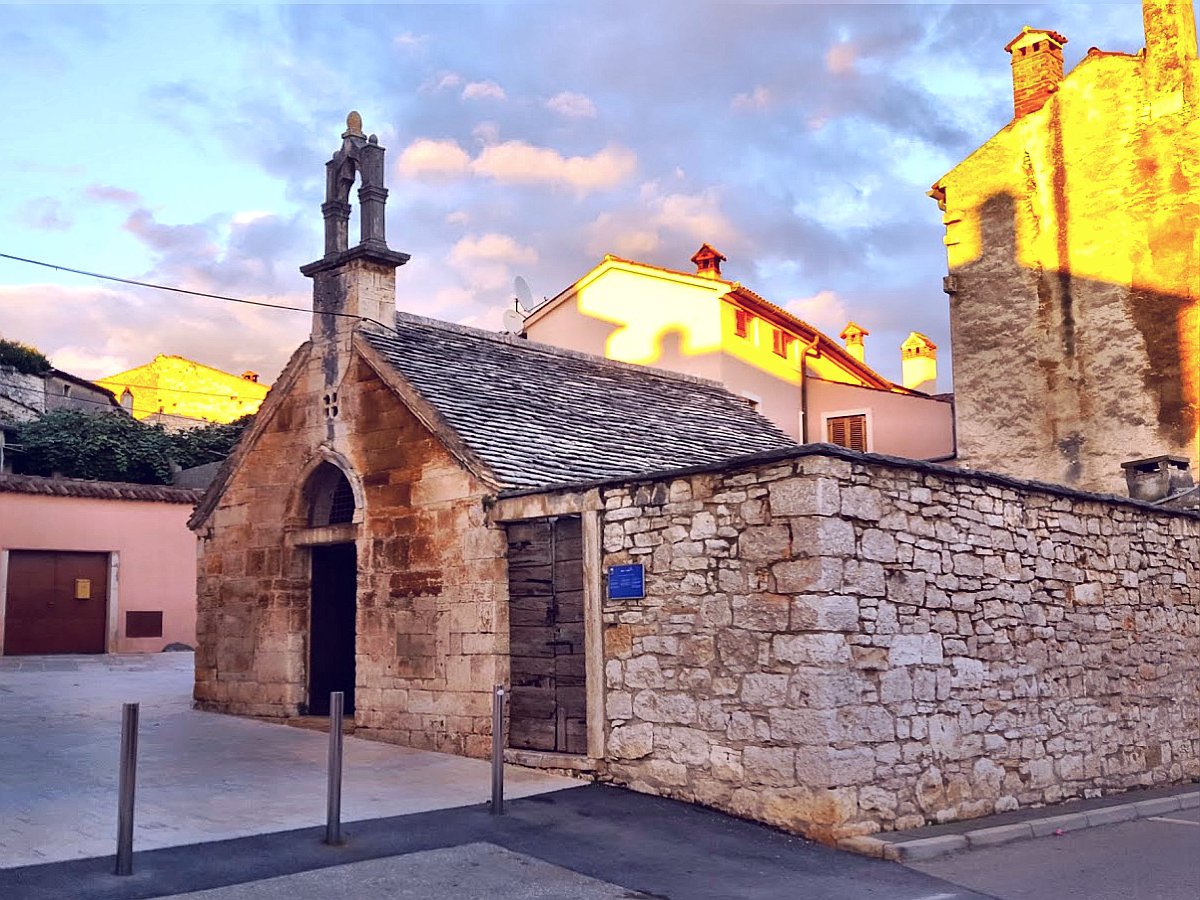 The small church of the Holy Spirit (Sv. Duh) was built in the 15th century. Particularly remarkable is the roofing of the church with stone slabs. The interior contains frescoes by master craftsman Albert von Konstanz, also from the 15th century.
The small church of the Holy Spirit (Sv. Duh) was built in the 15th century. Particularly remarkable is the roofing of the church with stone slabs. The interior contains frescoes by master craftsman Albert von Konstanz, also from the 15th century.
7 - Chapel Sant Elena and Trg Sant Elena
 The small chapel of Sant Elena is located in the northern part of the old town. It was built in the 18th century on the site of a former gate to the old city wall.
The small chapel of Sant Elena is located in the northern part of the old town. It was built in the 18th century on the site of a former gate to the old city wall.
In front of the church is the beautiful square 'Trg Sant Elena'. The former parade ground is dominated by a large building with blue shutters on the north side. During the short period of French occupation, it served as the administrative headquarters and is therefore today known as the 'French House'.
8 - Church Sveti Ilija
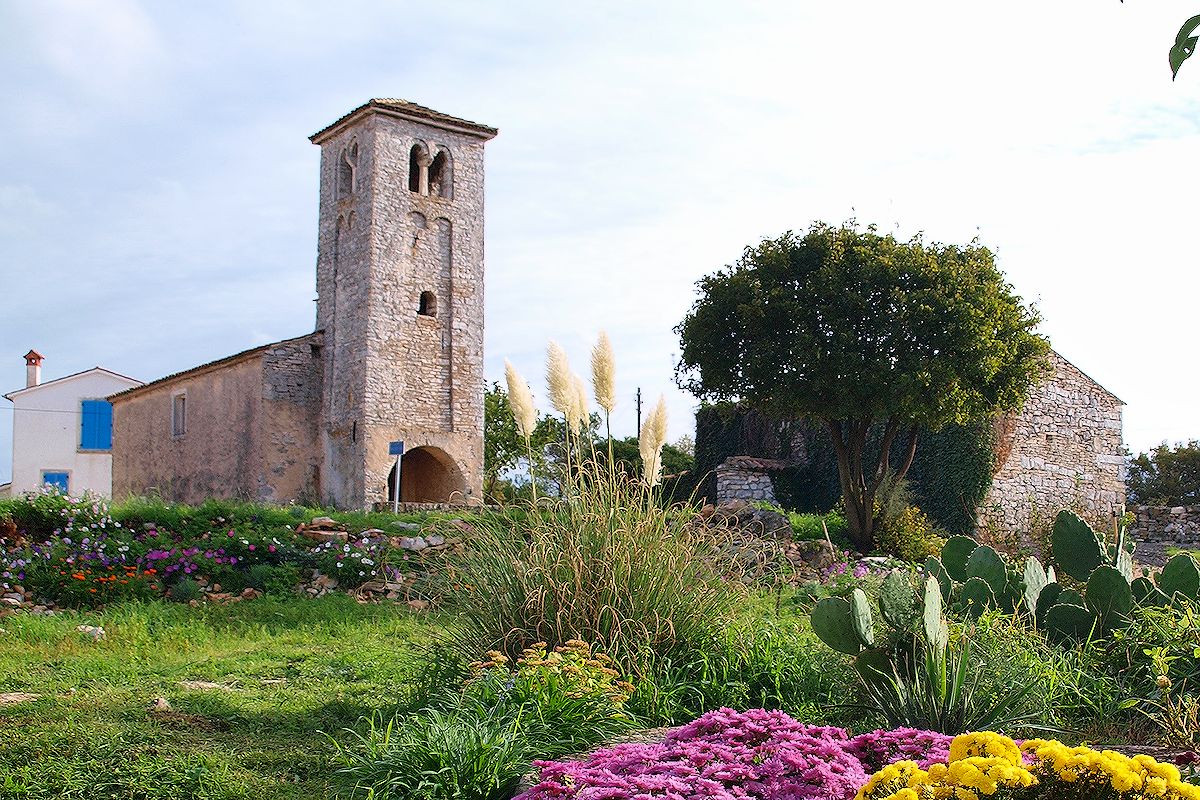 Sveti Ilija is a small church in the pre-Romanesque style and probably dates from the 7th or 8th century. In the 14th century it was rebuilt and extended by a bell tower. It is one of the oldest churches in Istria.
Sveti Ilija is a small church in the pre-Romanesque style and probably dates from the 7th or 8th century. In the 14th century it was rebuilt and extended by a bell tower. It is one of the oldest churches in Istria.
9 - Chapel Sveti Antun Opat
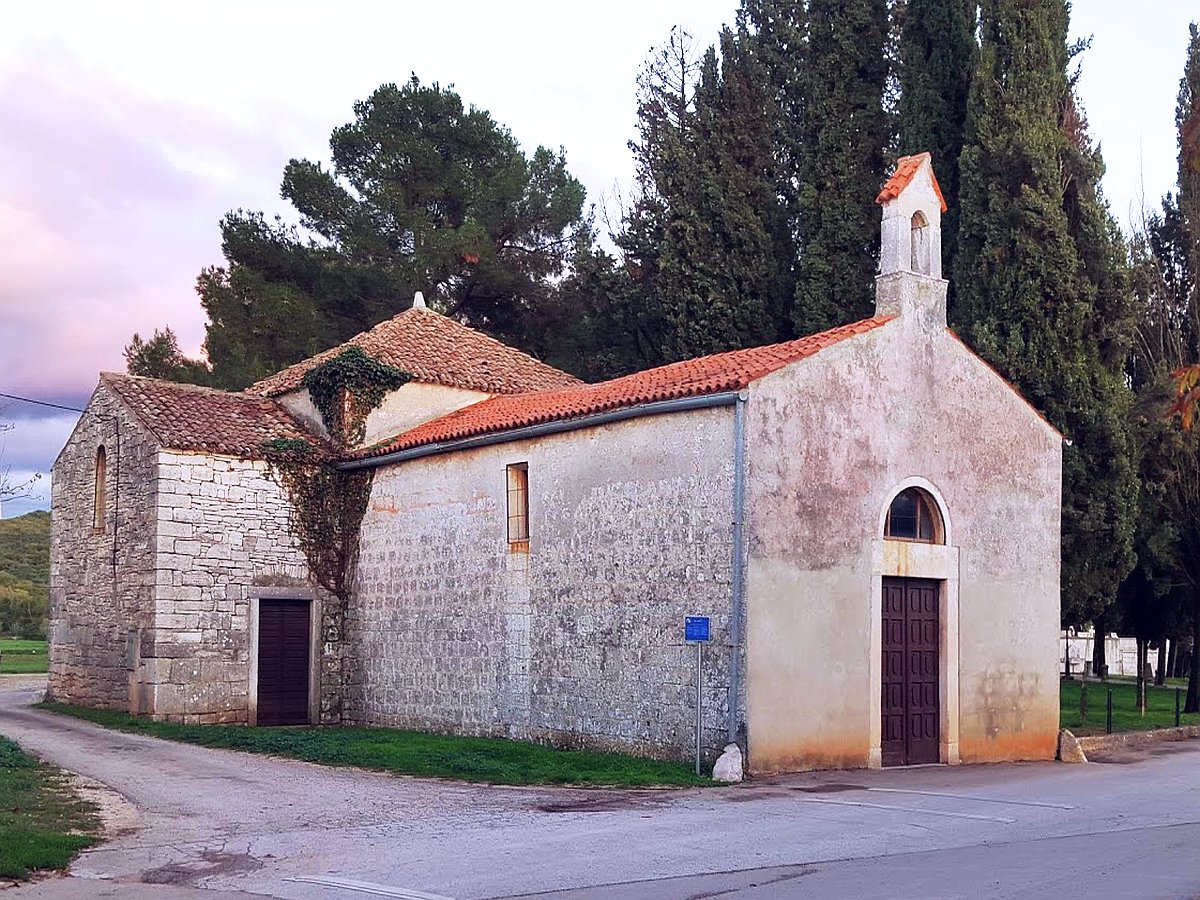 At the cemetery of Bale there is this small chapel from the 14th century. Today, the cross-shaped building serves as a cemetery chapel and houses some Gothic frescoes. Some Glagolitic inscriptions from the 15th and 16th centuries have also been preserved.
At the cemetery of Bale there is this small chapel from the 14th century. Today, the cross-shaped building serves as a cemetery chapel and houses some Gothic frescoes. Some Glagolitic inscriptions from the 15th and 16th centuries have also been preserved.
10 - MMC 'Ulika'
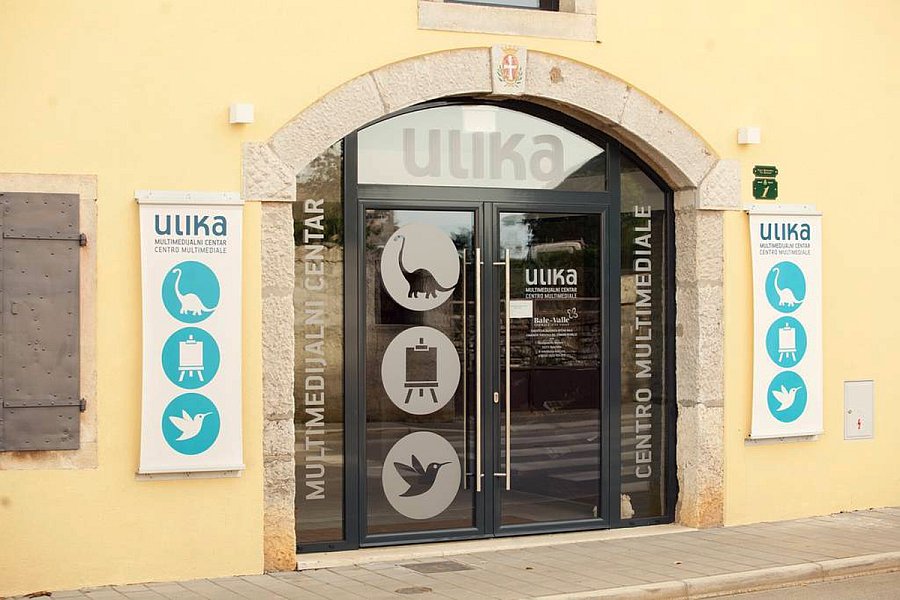 The multimedia centre 'Ulika' is the cultural centre of Bale. In addition to the tourist information desk, there is a changing exhibition of local artists on the ground floor.
The multimedia centre 'Ulika' is the cultural centre of Bale. In addition to the tourist information desk, there is a changing exhibition of local artists on the ground floor.
A palaeontological exhibition has been on the upper floor since 2014. Among others, you can admire dinosaur bones, which were found in 1991 in the bay of Colone. Incidentally, this find is unique in the entire Mediterranean region. An extensive ornithological collection of native bird species can also be admired.
11 - Sveti Mičel
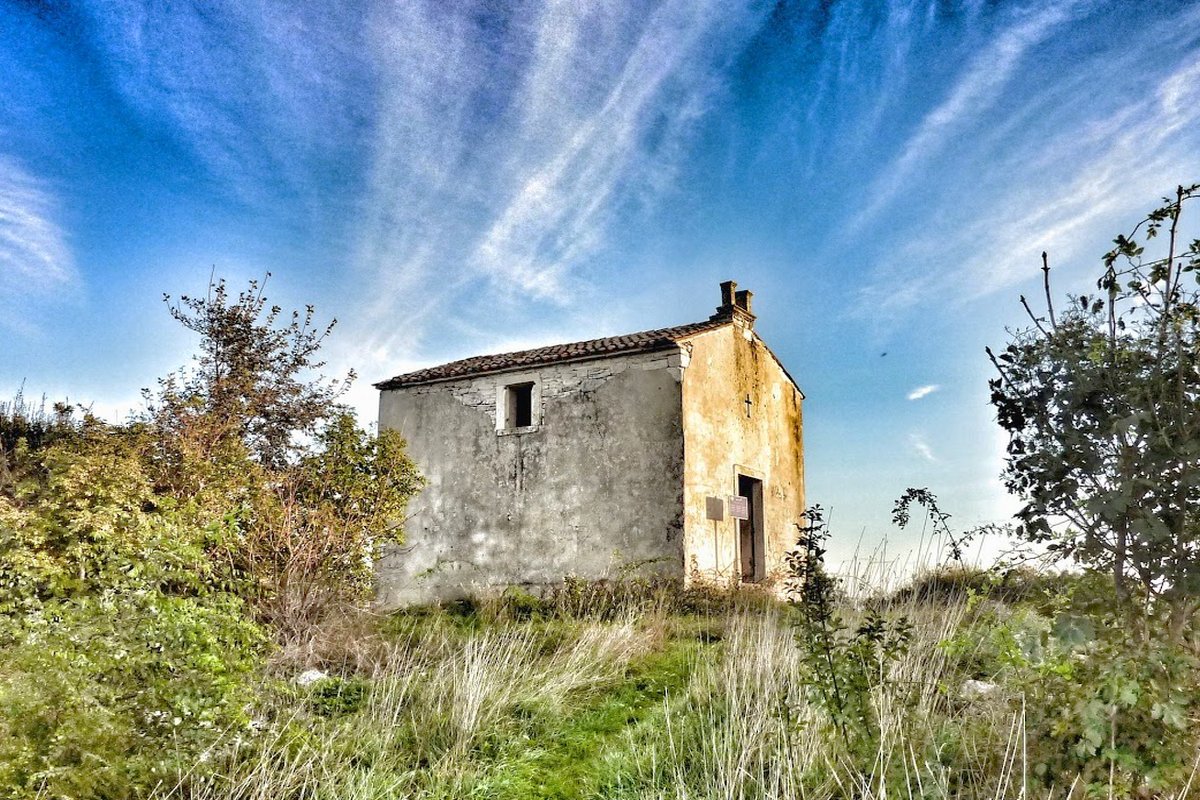 The chapel of Sveti Mičel (Italian: San Michele) is located on a small hill east of Bale, about 200 m above sea level. Although the chapel is in a bad condition, the beautiful walk of Bale (roundtrip approx. 1 hour) is definitely worthwhile: From the hill you have a fantastic panoramic view over the Istrian peninsula!
The chapel of Sveti Mičel (Italian: San Michele) is located on a small hill east of Bale, about 200 m above sea level. Although the chapel is in a bad condition, the beautiful walk of Bale (roundtrip approx. 1 hour) is definitely worthwhile: From the hill you have a fantastic panoramic view over the Istrian peninsula!
12 - Bird sanctuary Palud
 The only bird sanctuary in Istria is located north of Colone Bay. A swampy area has developed in a small depression that was connected to the sea by a 200 m long channel at the beginning of the 20th century. Due to the increasing salt content, the development of mosquitoes and the transmission of malaria infections were successfully combated.
The only bird sanctuary in Istria is located north of Colone Bay. A swampy area has developed in a small depression that was connected to the sea by a 200 m long channel at the beginning of the 20th century. Due to the increasing salt content, the development of mosquitoes and the transmission of malaria infections were successfully combated.
Today, the small lake attracts numerous bird species, including many endangered species. Bird lovers can observe the activity from an observation station.
13 - Herbal Park Histria Aromatica
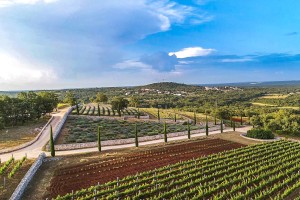 In the summer of 2014, after more than 10 years of construction, this unique natural park has opened its doors on a small hill near Bale. The variety of Istrian flora is presented on an area of 25 hectares: fig and olive trees, vines and above all the 300 different aromatic aromatic herbs create a very special atmosphere. A walk through the terraced flowerbeds enchants all the senses.
In the summer of 2014, after more than 10 years of construction, this unique natural park has opened its doors on a small hill near Bale. The variety of Istrian flora is presented on an area of 25 hectares: fig and olive trees, vines and above all the 300 different aromatic aromatic herbs create a very special atmosphere. A walk through the terraced flowerbeds enchants all the senses.
14 - The bays of San Pol and Colone
 The bays of San Pol and Colone are certainly among the most beautiful beaches in Istria. They also offer remarkable archaeological finds. For example, near the San Pol beach, remains of a Roman villa have been uncovered. At the beach Colone there is a small chapel Sv. Jakov from the 14th century.
The bays of San Pol and Colone are certainly among the most beautiful beaches in Istria. They also offer remarkable archaeological finds. For example, near the San Pol beach, remains of a Roman villa have been uncovered. At the beach Colone there is a small chapel Sv. Jakov from the 14th century.
A stroll along the coast is a delightful experience, but you should bring along some sure-footedness.
15 - Fort Forno
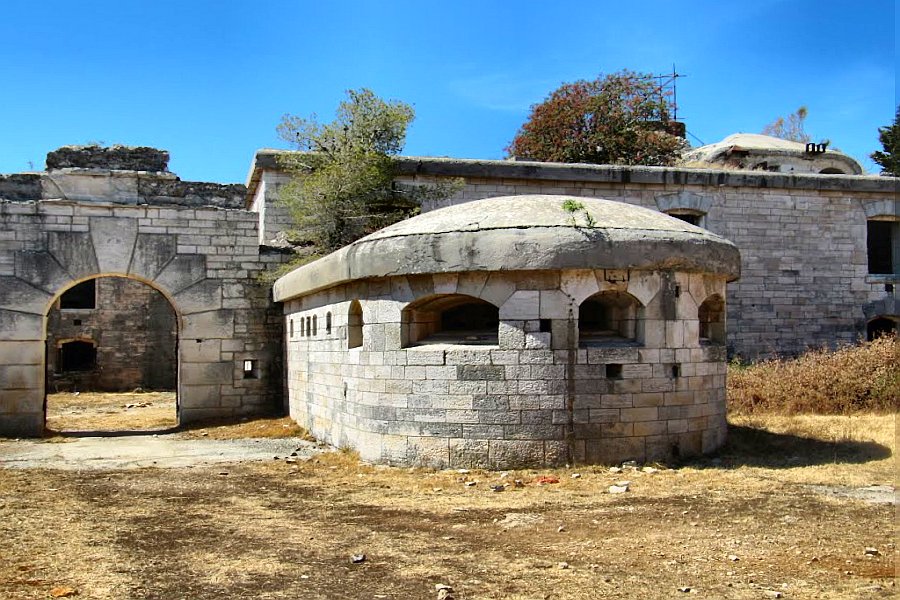 South of the beach Colone in the direction of Barbariga there are impressive testimonies from the k. u. k. period: Between 1898 and 1914, extensive defensive structures were built between Bale and Pula to secure the naval base in Pula. At the southern end of the Colone beach begins the area of the former Forno fort and the barracks of Paravia behind it.
South of the beach Colone in the direction of Barbariga there are impressive testimonies from the k. u. k. period: Between 1898 and 1914, extensive defensive structures were built between Bale and Pula to secure the naval base in Pula. At the southern end of the Colone beach begins the area of the former Forno fort and the barracks of Paravia behind it.
Fort Forno is still very impressive, despite the many destructions, and offers beautiful views of the numerous bays along the coast between Rovinj and Pula. Attention: The whole area is restricted area and an' official' access is not possible - entering at your own risk!


